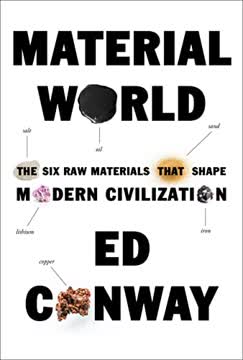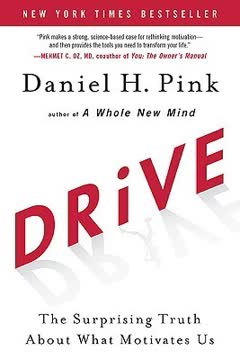Key Takeaways
1. Economic foundations: The invisible hand and supply-demand dynamics
The simple conceit is as follows: there is nothing wrong with people acting in their self-interest. In a free market, the combined force of everyone pursuing his or her own individual interests is to the benefit of society as a whole, enriching everyone.
The invisible hand is the cornerstone of free-market economics, proposing that self-interested actions collectively benefit society. This concept, introduced by Adam Smith, explains how market forces naturally allocate resources efficiently without central planning.
Supply and demand form the core mechanism of market economies:
- Demand represents consumers' willingness to buy at various prices
- Supply indicates producers' willingness to sell at different price points
- The equilibrium price is where supply meets demand
The interplay between supply and demand determines prices, profits, and resource allocation across the economy. This dynamic process leads to efficient outcomes in most cases, though market failures can occur in certain situations.
2. Comparative advantage: The key to international trade and specialization
Name me one proposition in all of the social sciences which is both true and nontrivial.
Comparative advantage, developed by David Ricardo, demonstrates that countries benefit from specializing in productions where they have a relative efficiency advantage and trading with others. This principle applies even when one country has an absolute advantage in producing all goods.
Key implications of comparative advantage:
- Encourages international trade and specialization
- Leads to increased global production and consumption
- Explains why free trade can benefit all participating countries
While critics argue that the theory oversimplifies real-world complexities, it remains a fundamental concept in international economics and trade policy.
3. Macroeconomic pillars: GDP, inflation, and central bank policies
Inflation is always and everywhere a monetary phenomenon.
Gross Domestic Product (GDP) measures a country's total economic output, serving as a key indicator of economic health and growth. It comprises consumption, investment, government spending, and net exports.
Inflation, the general rise in price levels, erodes purchasing power and can destabilize economies if left unchecked. Central banks use various tools to manage inflation:
- Interest rate adjustments
- Open market operations
- Reserve requirements
Central banks play a crucial role in steering economies, balancing growth with price stability. Their policies influence everything from employment levels to currency values, making them powerful economic actors.
4. The evolution of economic systems: Capitalism, communism, and mixed economies
The theory of communism may be summed up in one sentence: Abolish all private property.
Capitalism is characterized by private ownership, free markets, and profit motivation. It has proven effective at generating wealth but can lead to inequality and market failures.
Communism, as envisioned by Karl Marx, advocated for common ownership of production means and the abolition of social classes. While theoretically promoting equality, real-world implementations have often led to economic inefficiency and political repression.
Mixed economies attempt to balance capitalist and socialist elements:
- Private enterprise for most economic activities
- Government intervention in key sectors (e.g., healthcare, education)
- Social safety nets to address market failures
Most modern economies fall somewhere on this spectrum, combining market forces with varying degrees of government regulation and social programs.
5. Financial markets: Bonds, stocks, and the dangers of speculation
Be fearful when others are greedy and greedy only when others are fearful.
Bond markets facilitate government and corporate borrowing, playing a crucial role in financing economic activities. Bond prices and yields reflect market perceptions of risk and economic conditions.
Stock markets allow companies to raise capital and provide investors with ownership stakes. They serve as barometers of economic health but can be prone to irrational exuberance and panic.
The dangers of speculation:
- Asset bubbles and subsequent crashes
- Misallocation of resources
- Financial instability affecting the broader economy
Effective regulation and investor education are essential to harness the benefits of financial markets while mitigating risks.
6. Boom and bust cycles: Understanding economic fluctuations
The business cycle is doomed, thanks chiefly to the Government.
Economic cycles consist of periods of expansion followed by contraction. Key phases include:
- Expansion: Rising GDP, employment, and investment
- Peak: The highest point of economic activity
- Contraction: Falling GDP, rising unemployment
- Trough: The lowest point before recovery begins
Factors contributing to economic cycles:
- Monetary policy decisions
- Technological innovations
- External shocks (e.g., oil price fluctuations)
- Changes in consumer and business confidence
While some economists believe cycles can be eliminated through government intervention, others argue they are an inherent feature of market economies. Understanding these cycles is crucial for policymakers, businesses, and investors.
7. Globalization and international economics: Benefits and challenges
Globalization is a fact of life. But I believe we have underestimated its fragility.
Globalization has led to increased economic interdependence between nations through trade, investment, and cultural exchange. Benefits include:
- Increased economic growth
- Lower prices for consumers
- Spread of technology and innovation
Challenges of globalization:
- Job displacement in developed countries
- Environmental concerns
- Cultural homogenization
- Increased economic volatility
International institutions like the WTO, IMF, and World Bank play crucial roles in managing global economic relations. The future of globalization depends on balancing its benefits with addressing its negative consequences.
8. Development economics: Addressing global poverty and inequality
Before [the end of the Cold War] there had been the challenge from Russia that you'd better treat the developing countries reasonably well or they might go to the other side – so there was competition.
Development economics focuses on improving living standards in low-income countries. Key challenges include:
- Poverty traps
- Lack of access to education and healthcare
- Weak institutions and corruption
- Limited infrastructure
Approaches to development:
- Foreign aid and debt relief
- Promoting trade and foreign investment
- Improving governance and fighting corruption
- Investing in human capital through education and healthcare
The field continues to evolve, with increasing emphasis on sustainable development and addressing global inequalities.
9. Environmental economics: Balancing growth with sustainability
The evidence on the seriousness of the risks from inaction or delayed action is now overwhelming. We risk damages on a scale larger than the two world wars of the last century. The problem is global and the response must be a collaboration on a global scale.
Environmental economics examines the interaction between economic activities and environmental issues. Key concepts include:
- Externalities: Costs or benefits not reflected in market prices
- Tragedy of the commons: Overexploitation of shared resources
- Sustainable development: Meeting present needs without compromising future generations
Policy tools for addressing environmental challenges:
- Carbon pricing (taxes or cap-and-trade systems)
- Renewable energy incentives
- Regulations on pollution and resource extraction
Balancing economic growth with environmental protection remains a critical challenge for policymakers and businesses worldwide.
10. Behavioral economics: Challenging assumptions of human rationality
Economics has an Achilles' heel. Until recently many practitioners attempted to ignore or dispute this shortcoming – but it can ultimately be held responsible for many of the glaring mistakes economists have made for hundreds of years. It is the erroneous assumption that humans are rational.
Behavioral economics integrates insights from psychology to explain economic decision-making. Key findings include:
- Bounded rationality: Limited cognitive abilities affect decision-making
- Loss aversion: People feel losses more strongly than equivalent gains
- Framing effects: How choices are presented influences decisions
Implications of behavioral economics:
- Challenges to traditional economic models
- New approaches to policy design (e.g., "nudges")
- Improved understanding of financial market behavior
By acknowledging human irrationality, behavioral economics provides a more nuanced and realistic view of economic behavior, leading to better policy and business strategies.
Last updated:
FAQ
What’s "50 Economics Ideas You Really Need to Know" by Edmund Conway about?
- Comprehensive overview: The book introduces 50 essential economic concepts, making economics accessible to general readers by focusing on real-world examples and human behavior.
- Human-centered approach: Edmund Conway emphasizes that economics is fundamentally about people, their choices, and the incentives that drive them.
- Contextual relevance: Written during the 2008 financial crisis, the book reflects on economic challenges, the fragility of prosperity, and the importance of understanding economic complexity.
- Standalone chapters: Each idea is presented independently, allowing readers to explore topics in any order.
Why should I read "50 Economics Ideas You Really Need to Know" by Edmund Conway?
- Clear explanations: The book breaks down complex economic ideas into digestible, jargon-free explanations suitable for readers without prior economics knowledge.
- Broad coverage: It spans foundational theories, modern movements, and pressing global issues, providing a solid base for understanding contemporary economic debates.
- Critical thinking: Conway encourages readers to question conventional wisdom and develop an economist’s mindset, focusing on incentives, opportunity costs, and market dynamics.
- Practical relevance: Real-world examples and historical context make the concepts applicable to everyday life and current events.
What are the key takeaways from "50 Economics Ideas You Really Need to Know" by Edmund Conway?
- Property rights and incentives: Secure ownership is crucial for investment and economic growth, while its absence can lead to resource depletion.
- Economic cycles and markets: Boom and bust cycles, financial markets, and creative destruction are central to understanding economic progress and instability.
- Behavioral economics: People often act irrationally, and understanding these behaviors is vital for effective policy and market analysis.
- Globalization and inequality: The book explores the benefits and drawbacks of globalization, including its impact on poverty, inequality, and cultural identity.
What are the most important economic concepts explained in "50 Economics Ideas You Really Need to Know" by Edmund Conway?
- Invisible hand: Adam Smith’s idea that self-interest in free markets can unintentionally benefit society as a whole.
- Supply and demand: The fundamental law determining prices through the interaction of buyers and sellers, including concepts like price elasticity.
- Opportunity cost: The value of the next best alternative forgone when making a choice, crucial for rational decision-making.
- Incentives: The rewards and penalties that shape human behavior in markets, government, and society.
- Division of labour and comparative advantage: How specialization and trade increase productivity and benefit all parties involved.
How does Edmund Conway define and explain the "invisible hand" in "50 Economics Ideas You Really Need to Know"?
- Definition and origin: The invisible hand, coined by Adam Smith, describes how individuals pursuing self-interest in free markets unintentionally promote societal benefits.
- Mechanism: Through competition and innovation, self-interested actions can lead to better products, lower prices, and overall societal gains.
- Limitations: The invisible hand requires a legal framework to function properly and can be undermined by greed, law-breaking, or market failures.
- Not an ideology: Conway clarifies that the invisible hand is a positive economic theory, not a political doctrine.
How does "50 Economics Ideas You Really Need to Know" by Edmund Conway explain supply and demand?
- Basic principles: Supply is what sellers offer at a price; demand is what buyers want to purchase. Prices adjust to balance the two, reaching equilibrium.
- Price signals: Prices communicate changes in supply and demand, influencing production and consumption decisions.
- Elasticity: The book explains how sensitive buyers and sellers are to price changes, with examples like oil (inelastic) and phone calls (elastic).
- Market dynamics: Prices fluctuate due to seasonality and external shocks, rarely staying at perfect equilibrium.
What is opportunity cost and why is it significant according to Edmund Conway’s "50 Economics Ideas You Really Need to Know"?
- Definition: Opportunity cost is the value of the next best alternative forgone when making a choice.
- Everyday relevance: The book uses relatable examples, such as choosing between watching a football match or attending university, to illustrate hidden costs.
- Business and government: Opportunity cost is crucial for investment decisions and public policy, highlighting the trade-offs inherent in resource allocation.
- Psychological impact: Recognizing opportunity costs can lead to better decisions but may also cause regret or indecision.
How does Edmund Conway describe the role of incentives in "50 Economics Ideas You Really Need to Know"?
- Fundamental driver: Incentives are the rewards or penalties that influence people’s decisions and actions.
- Examples: The book discusses supermarket reward cards, health campaigns, and government policies as ways incentives shape behavior.
- Non-monetary incentives: Social approval and personal satisfaction can be as influential as financial rewards.
- Policy design: Ignoring incentives can lead to unintended consequences and policy failures.
What is the significance of division of labour and comparative advantage in "50 Economics Ideas You Really Need to Know" by Edmund Conway?
- Division of labour: Specialization increases productivity, as illustrated by Adam Smith’s pin factory and Venice’s shipbuilding.
- Comparative advantage: David Ricardo’s theory shows that countries benefit from specializing in goods where they have a relative efficiency, even if one is better at everything.
- Trade benefits: Specialization and trade increase total output and prosperity for all parties involved.
- Modern challenges: The book addresses criticisms, such as market imperfections and economic shocks, but maintains the importance of these concepts.
How does "50 Economics Ideas You Really Need to Know" by Edmund Conway explain the tragedy of the commons and property rights?
- Tragedy of the commons: Occurs when individuals overuse shared resources due to lack of ownership or responsibility, leading to depletion.
- Historical examples: Soviet farmers and nomadic herders are cited as cases where absence of property rights led to resource mismanagement.
- Economic implications: Secure property rights are essential for investment, conservation, and economic development.
- Role of government: Establishing and enforcing property rights is a foundational government function for a thriving economy.
What does Edmund Conway say about financial markets—banks, bonds, and stocks—in "50 Economics Ideas You Really Need to Know"?
- Banks: Act as intermediaries between savers and borrowers, using fractional reserve banking to increase economic activity but also posing risks of instability.
- Bond markets: Allow governments to raise funds by issuing debt, with interest rates reflecting risk and influencing the broader economy.
- Stock markets: Provide liquidity and ownership in companies, with share prices driven by investor confidence, fear, and greed.
- Market risks: All financial markets are susceptible to bubbles, crashes, and require regulation to prevent systemic crises.
How does "50 Economics Ideas You Really Need to Know" by Edmund Conway address behavioral economics and its importance?
- Human irrationality: Behavioral economics studies how people often act irrationally, influenced by emotions, biases, and social context.
- Key principles: Concepts like anchoring, framing, and moral judgments challenge the traditional view of rational economic actors.
- Policy implications: Insights from behavioral economics inform "nudge" policies, such as automatic pension enrollment, to guide better decisions.
- Broader impact: Understanding real human behavior is crucial for designing effective economic policies and understanding market outcomes.
How does Edmund Conway discuss globalization and its impacts in "50 Economics Ideas You Really Need to Know"?
- Definition and drivers: Globalization is the increasing economic interconnection through trade, investment, and technology, accelerated by free trade and communication advances.
- Benefits: It has lifted millions out of poverty, lowered inflation, and increased access to goods and services.
- Criticisms: Globalization has also led to greater inequality, human rights concerns, and threats to cultural identity.
- Balanced perspective: The book presents both the positive and negative effects, encouraging readers to understand its complexity.
Review Summary
50 Economics Ideas You Really Need to Know is generally praised as an accessible introduction to key economic concepts. Readers appreciate its clear explanations, concise format, and ability to demystify complex topics. Many find it useful as a quick reference or refresher. Some criticize it for being too basic or Anglo-centric, while others note it's not meant to be an in-depth academic text. Overall, reviewers recommend it as a solid starting point for understanding fundamental economic ideas.
Similar Books










Download PDF
Download EPUB
.epub digital book format is ideal for reading ebooks on phones, tablets, and e-readers.




